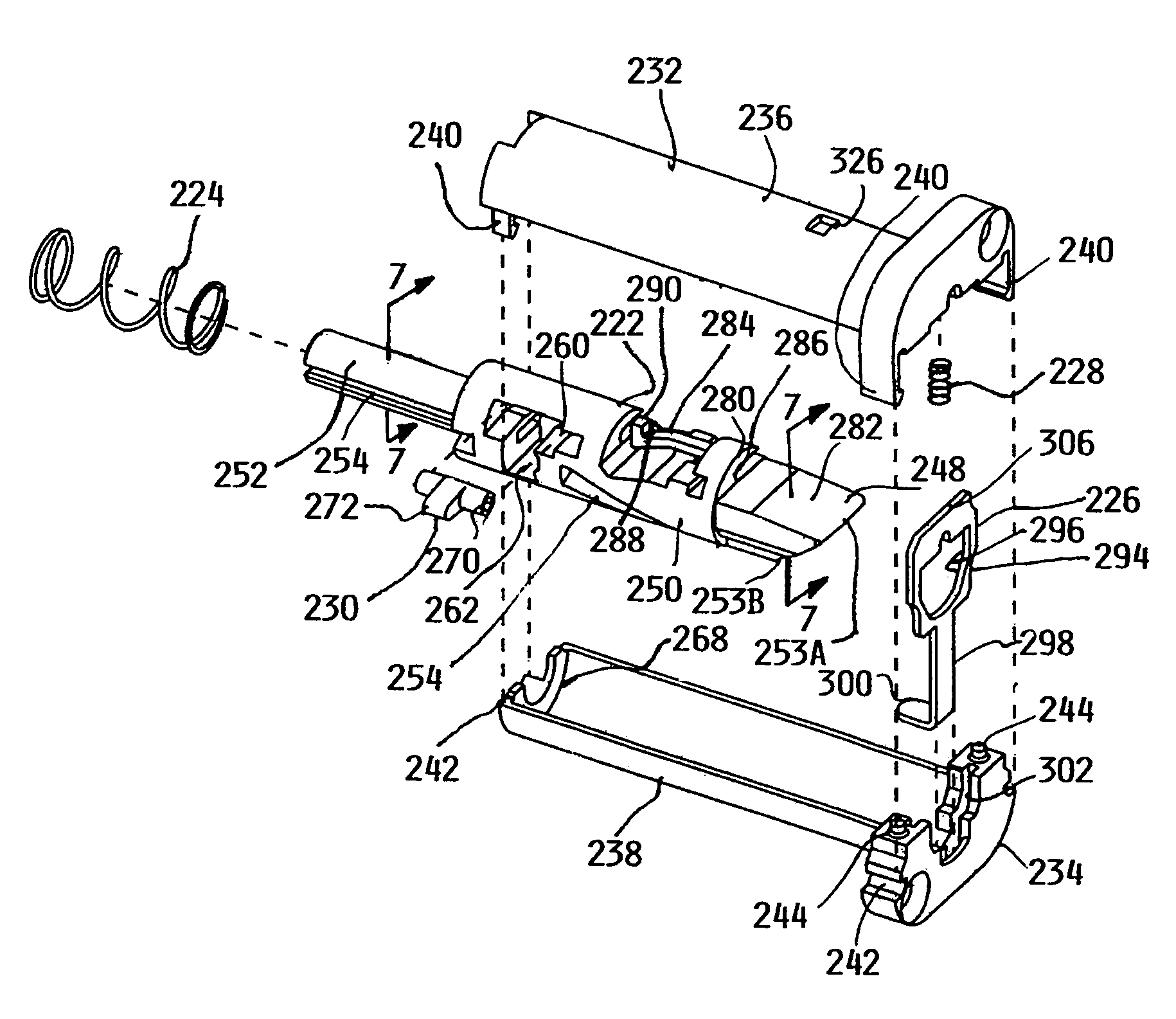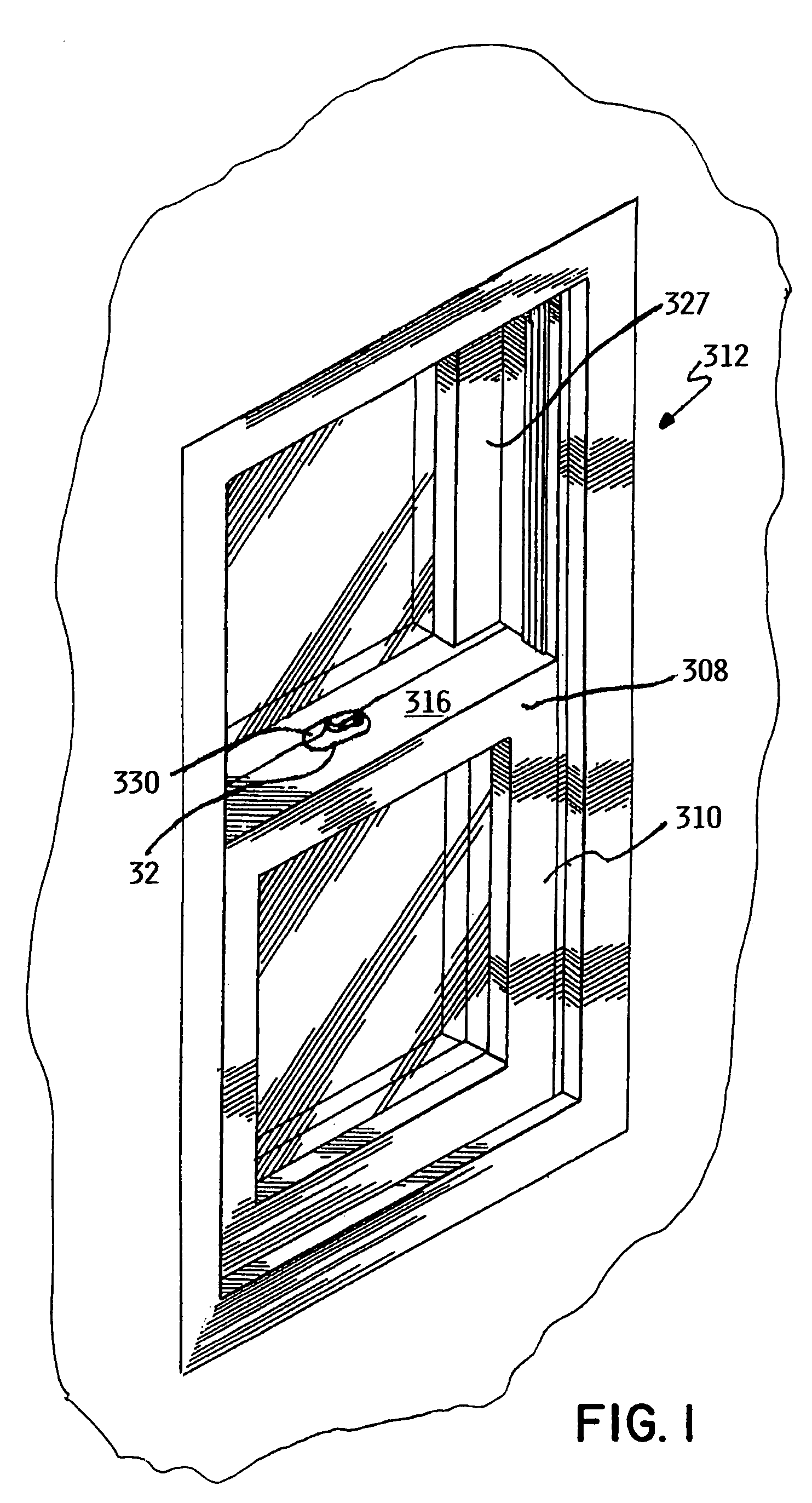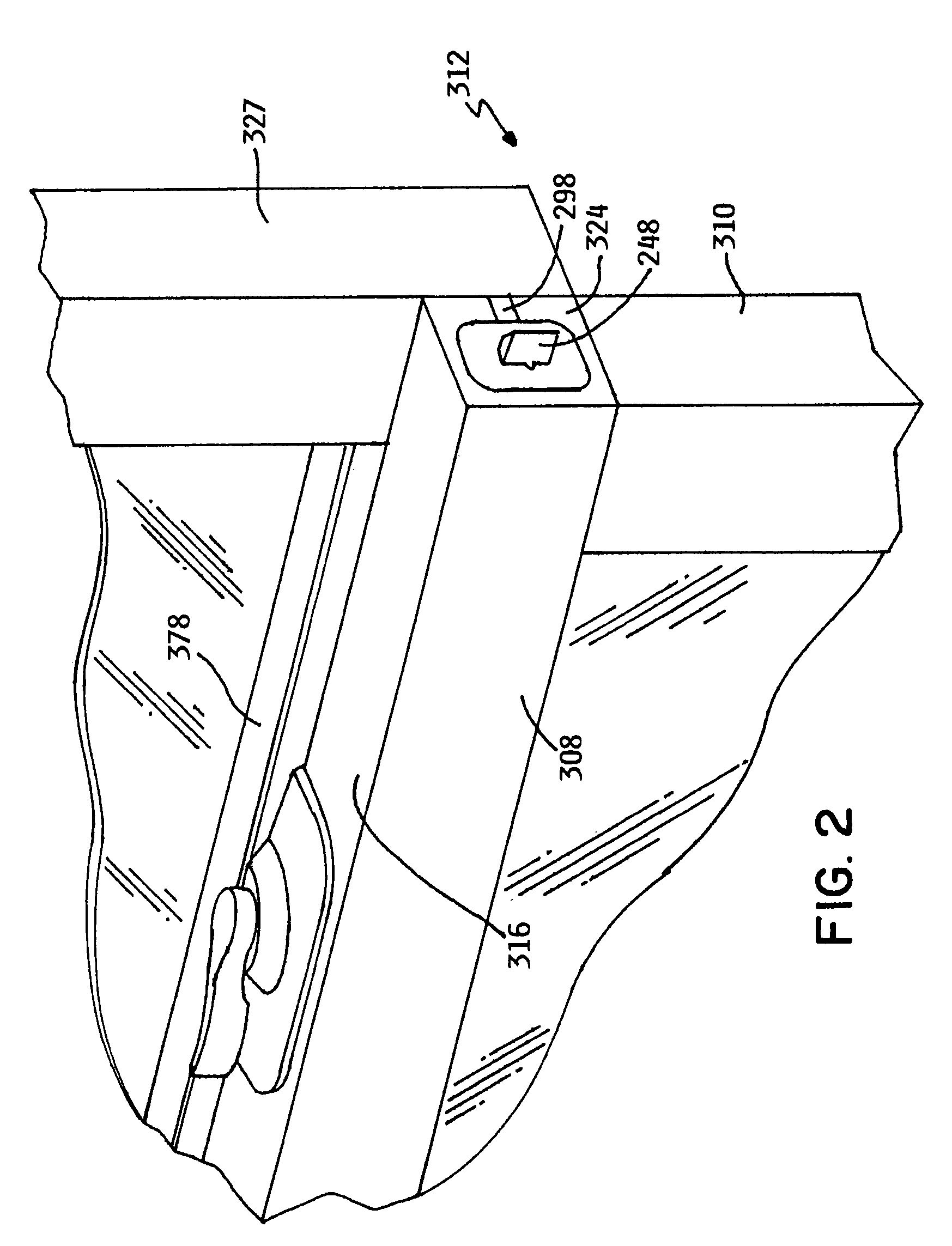Integrated lock and tilt-latch mechanism for a sliding window
a sliding window and lock technology, applied in the field of window locks, can solve the problems of poor washability, inconvenient use, and poor washing effect of traditional double-hung window designs, and achieve the effects of convenient installation, simple use, and convenient tilting of the sash
- Summary
- Abstract
- Description
- Claims
- Application Information
AI Technical Summary
Benefits of technology
Problems solved by technology
Method used
Image
Examples
Embodiment Construction
[0064]As depicted in FIG. 4, tilt lock latch assembly 30 generally includes actuator assembly 32, tilt latch assemblies 34, and linking member 36. Actuator assembly 32 generally includes a housing 38 defined by base assembly 40 and housing cover 42. Control lever 44 is coupled with housing cover 42 through aperture 46, which receives shank 48 of lever 44 therethrough. Shank 48 has upper portion 50 which is generally cylindrical in shape and lower portion 52 which defines flats 54, 54A. Full height protuberance 55 extends outwardly from flat 54A, while half height protuberance 55A extends outwardly from flat 54. Retainer 56 is received on upper portion 50 of shank 48 and retains lever 44 on housing cover 42 so that lever 44 is rotatable about axis A-A relative to housing cover 42 as annotated in FIG. 12.
[0065]As depicted in FIGS. 14-17 and 44-46, base assembly 40 generally includes body 58, sweep cam 60, spool 62, detent spring 64, housing retainer 66, and pick plate 68. Underside 70...
PUM
 Login to View More
Login to View More Abstract
Description
Claims
Application Information
 Login to View More
Login to View More - R&D
- Intellectual Property
- Life Sciences
- Materials
- Tech Scout
- Unparalleled Data Quality
- Higher Quality Content
- 60% Fewer Hallucinations
Browse by: Latest US Patents, China's latest patents, Technical Efficacy Thesaurus, Application Domain, Technology Topic, Popular Technical Reports.
© 2025 PatSnap. All rights reserved.Legal|Privacy policy|Modern Slavery Act Transparency Statement|Sitemap|About US| Contact US: help@patsnap.com



